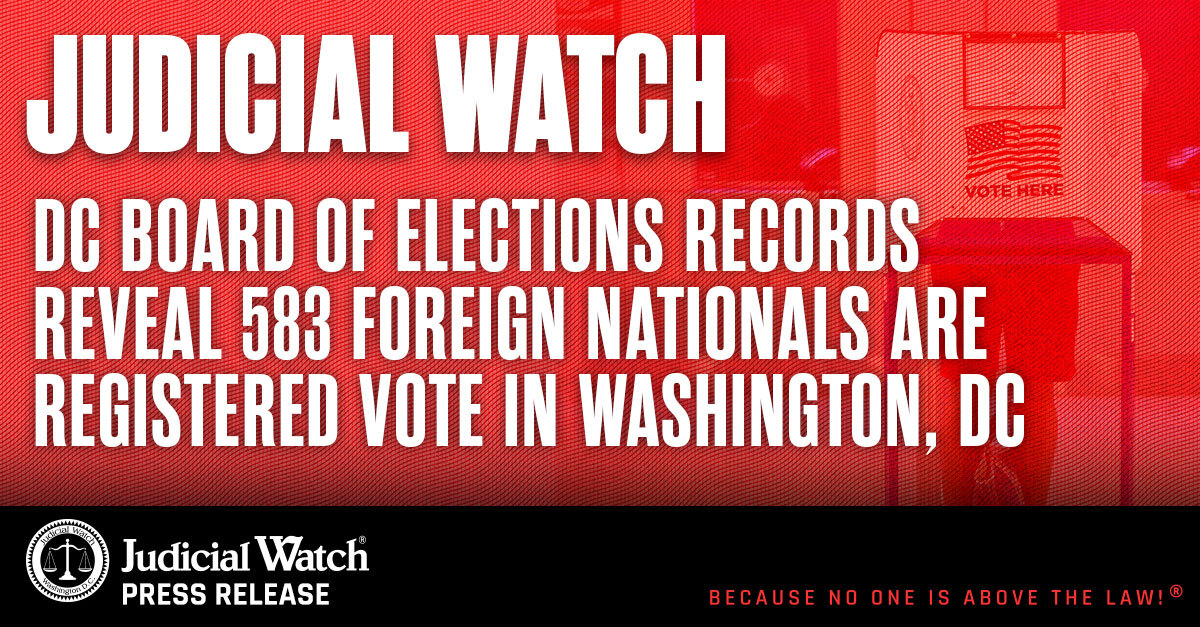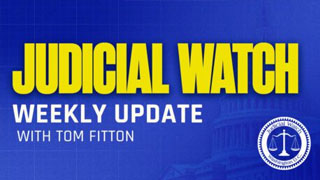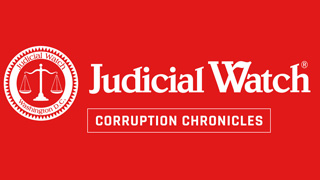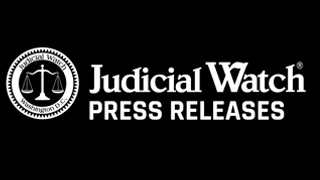

Trump Victimized by Media
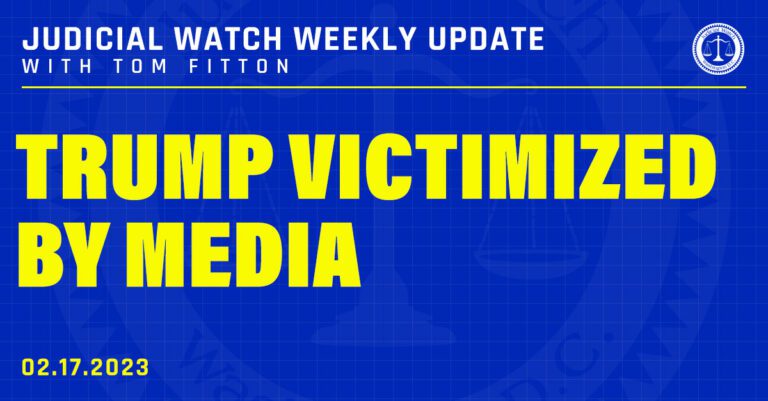

Trump Vindicated: Media Elite Turn on “Russiagate” Coverage
D.C. Schools Set to Push CRT, Anti-Americanism, Leftist Propaganda
Texas Border Operation Catches 348,000 Illegals, 361 million Fentanyl Doses
Trump Vindicated: Media Elite Turn on “Russiagate” Coverage
Micah Morrison, our chief investigative reporter, reviews in Investigative Bulletin the work of two distinguished journalists who look back at the terrible failure of the press that didn’t so much as report on President Trump as try to prosecute him.
The entire mad media Russia mess of the Trump presidency—the furious coverage of the salacious Steele Dossier, the Mueller special counsel probe, the presidential tweets and bombast, the FBI inquiries, Congressional inquiries, inspector general inquiries, the sinister suggestions of collusion and corruption, treason and betrayal, prostitutes and pay offs, the small fish hauled in and then tossed aside—Flynn, Page, Papadopoulos, Kilimnik, Manafort, Mifsud, Millian, Bannon, Stone—“which office do I go to, to get my reputation back,” former Labor Secretary Ray Donovan famously asked in an earlier scandal—the white-hot spectacle has faded from the news cycle. The circus has left town.
Years too late to have any real-time impact, it now appears that a reckoning has begun to arrive. Close observers of the media landscape may have noticed a shift when Bob Woodward, the most famous name in American journalism, began reminding readers of his opinion of the Steele Dossier. The dossier is the Rosetta Stone of Trump era reporting. Published to an immediate media frenzy in January 2017, the dossier was a compilation of grotesque rumors and allegations against the newly elected president—purportedly the work of a skilled Western intelligence asset, but in reality, as would emerge much later, the product of Trump’s political enemies.
In The Trump Tapes, an audio book of Trump-Woodward interviews published in November, Woodward repeatedly reminds Trump that he called the Steele Dossier a “garbage document” on Fox News as far back as 2017, and that Trump tweeted a thank you.
Woodward went further with his Washington Post colleagues, reports former New York Times investigative journalist Jeff Gerth in a monumental takedown of media coverage of Trump, “The Press Versus the President.” After the Fox News appearance, Woodward told Gerth in an interview, he “reached out to people who covered this” at the Post to express his concerns. Reporters at the Post ignored him, Woodward said. “To be honest, there was a lack of curiosity on the part of people at the Post about what I had said, why I said this.”
Gerth, like Woodward, is very much a figure of the media elite, a storied and widely respected investigative reporter. “The Press Versus the President” appears in a leading industry publication, the Columbia Journalism Review. Few news organizations “have reckoned seriously with what transpired between the press and the presidency,” Gerth writes. His 24,000 word, four part report, goes a long way to correcting the record. It likely will remain a landmark study of media malfeasance for decades to come.
Gerth focuses on the Times, the Washington Post, and the Wall Street Journal—still the standard setters across the journalistic spectrum. At the root of the problem in the Trump era, Gerth writes, “was an undeclared war between an entrenched media and a new kind of disruptive presidency.”
Gerth sets important context for understanding this war. He notes that it was Hillary Clinton, not Trump, who began the campaign “facing scrutiny over Russia ties.” He details the financing and evolution of the Steele Dossier as a product of Clinton allies and hired guns, and the media’s long love affair (with a few notable dissents) with the document. He reminds us that the Steele Dossier exploded on to the media scene after Trump won the election but before he was inaugurated—setting in motion a chain of events that embittered the new president toward the press and touching off dreams of a new Watergate among legions of ambitious reporters. He gets the former president and others on the record in interviews that offer revealing glimpses into the psychological dynamics at work on both sides of the war.
The president-elect was blindsided by the Steele Dossier. “Trump, unaware of the coming tornado, including the most salacious contents of the dossier, set out to make peace with the press [after the election]. He made the rounds of news organizations, meeting with broadcast anchors, editors at Conde Nast, magazines, and the Times.” At the end of the Times meeting, Gerth notes, he called the paper a “world jewel” and added, “I hope we can get along.”
After the emergence of the Steele Dossier and a tsunami of Russia-related stories, the new president abandoned hope of getting along the media. “I realized early on I had two jobs,” Trump told Gerth in an interview after he left the presidency. “The first was to run the country, and the second was survival. I had to survive: the stories were unbelievably fake.”
Fake—but deadly serious. A special counsel probe, led by Robert Mueller, was quickly triggered and Congress began to investigate. The Mueller probe loomed over Trump for two years—a mortal threat to his presidency. The probe, Gerth notes, “issued more than 2,800 subpoenas, interviewed 500 witnesses, and generated enormous interest. There were 533,000 news articles published involving Russia and Trump or Mueller…. The articles led to 245 million interactions on social media.”
In the end, Trump was cleared of wrongdoing. In a lengthy report, Mueller wrote: “the investigation did not establish that members of the Trump campaign conspired or coordinated with the Russian government.”
No collusion. No conspiracy. Trump tweeted that the Mueller Report was a “complete and total exoneration.” But the media did not quit—or for the most part even pause for reflection.
The Mueller Report noted “multiple links between Trump Campaign officials and individuals tied to the Russian government,” and ten episodes of possible obstruction of justice. Gerth notes that “the media, having already learned there was no overarching conspiracy, fleshed out the new details, including the more than hundred ‘links’cited by Mueller.”
Gerth is perhaps at his best examining these small fish and their fate at the hands of the FBI, Mueller, and the media. One example is Konstantin Kilimnik, a Russian-Ukrainian political consultant tied to former Trump campaign chief Paul Manafort. The Mueller Report, Gerth notes, said the FBI assessed Kilimnik “to have ties to Russian intelligence.” Manafort met with Kilimnik in August 2016 and shared campaign polling data with him. Sharing polling data apparently is a serious crime to the FBI—or so Mueller’s prosecutors believed. A later Senate Intelligence Committee Report called the Manafort-Kilimnik meeting as the “single most important direct tie” between the Trump campaign and Russian intelligence.
“But the evidence of Kilimnik’s Kremlin ties is far from certain,” Gerth notes. The “only known official inquiry, by Ukraine in 2016, didn’t result in charges. And some recently surfaced documents suggest that Kilimnik in fact was a “sensitive source” for the U.S. State Department.
Other once-promising villains in the media narrative of Trumpian wrongdoing, including Carter Page, George Papadopoulos, and Michael Flynn, get similar treatment from Gerth. And he offers a sharp analysis of what went wrong between the press and the president.
His main conclusion? Journalism’s “primary missions” of “informing the public and holding powerful interests accountable” have been undermined by an “erosion of journalistic norms and the media’s own lack of transparency about its work.” The U.S. media failed “to report facts that ran counter to prevailing narrative;” failed to seek comments from people who were “the subject of serious criticism;” failed to put reasonable limits on the use of anonymous sources; and failed to take a close look at their own behavior and motives.
And what of the president himself? The media’s failings were many, but Gerth also suggests that Trump’s towering self-confidence and love of showmanship contributed to his poisoned relationship with the press.
“At times,” Gerth notes, “Trump seemed to be almost toying with the press, offering spontaneous answers to questions about Russia that seemed to point to darker narratives.”
“I’ll often sit down with hostile press,” Trump told Gerth, “just to see if it’s possible to get them to write the truth. It almost never works.”
D.C. Schools Set to Push CRT, Anti-Americanism, Leftist Propaganda
Public schools in your nation’s capital don’t know how to teach reading, writing and arithmetic, as tests show, but they excel at developing Marxist-laden propaganda, a disturbing prospect for the future of their young charges. Our Corruption Chronicles blog has the details.To address perceptions of white, Western bias in curricula, public schools surrounding the nation’s capital are revamping social studies courses for all students with critical race theory (CRT), anti-Americanism, and a multitude of leftist propaganda. The new District of Columbia Public Schools (DCPS) Social Studies Standardsinclude teaching kindergartners about gender identity, second graders about same-sex relationships and gender fluidity in civilizations, fifth graders about queer culture and sixth graders about harmful border policies and how racism, privilege and bias affect the distribution of resources.
Ranked among the nation’s lowest performing public school districts, the Washington D.C. system has an enrollment of around 50,000 students that attend 118 campuses, 70 of them elementary schools. DCPS is well known for having among the country’s lowest math, reading and standardized test scores as well as a high dropout rate. A few years ago the DC State Board of Education revealed in a study that the DCPS teacher turnover rate is much higher than the national average and also exceeds the turnover rate of other comparable American cities, including New York, Chicago and Milwaukee. Nearly 20% of DCPS teachers leave each year and 55% quit after five years. Additionally, most schools do not keep a principal for more than five years.
This information is especially relevant because the beleaguered district dedicated precious resources to transform its social studies curriculum with highly questionable material rather than improve in areas it has long failed in. The DC State Board of Education began the overhaul in 2019 to “promote more culturally relevant instruction for students in the nation’s capital,” a local news outlet reported at the time. In the article education officials said the goal is to “address perceptions of white, Western bias in curricula.” According to the DCPS manager for social studies content teachers and students complained that the district’s standards are “not culturally relevant, sustaining or affirming” because the dominant narrative features Western European powers and the decisions of white Americans while the experiences of marginalized people continue to be diminished. “All of our students deserve to see their own cultural, racial and social backgrounds reflected in the curriculum,” said the DCPS official, Lindsay McCrea.
Here is a closer look at some of the changes that will be implemented in the effort to give marginalized people a more equal playing field with Western European powers and white Americans. Besides gender identity, kindergartners will learn to understand their racial, ethnic and religious identities. In first grade kids will identify a leader who has made their community more just and inclusive. Second graders will analyze the daily lives of different individuals in ancient societies including histories of same-sex relationships and gender fluidity in civilizations. In third grade D.C. students will be taught the importance of “affirming spaces,” which are described as safe places for people to express their identities. By fifth grade kids will analyze the rise of Black art, businesses, and queer culture.
On to middle school, the new sixth-grade curriculum includes a section describing the purpose, creation, evolution, and impact of international borders and has students evaluate who benefits and who is harmed by border policies. Students will also evaluate the extent wo which racism, privilege and bias have impacted global resource distribution and how resource distribution has influenced racism and imperialism. By seventh grade, students are introduced to the (evil) “European colonizer” and they will scrutinize how liberty, freedom and democracy were applied to different Americans on the basis of religion, socioeconomic status or class, race, and gender. Eighth graders will learn how protest can lead to change and they will investigate how media and social media can shape the way the public understands an issue.
The high school courses will include “Eurocentrism” and its lasting impact on people of color as well as the effects of colonization on Indigenous people. Classes will also focus on the invention of race as a social construct and how primarily white men fought for their rights while simultaneously oppressing others such as women, Black, Indigenous, and other people of color. Finally, high school seniors will go out learning about the shortcomings of democracy in the U.S. and ways that Black, Indigenous and people of color (BIPOC) as well as queer youth are impacting change.
Texas Border Operation Catches 348,000 Illegals, 361 million Fentanyl Doses
If President Biden won’t defend the border, and he hasn’t, then states must, and Texas has. A state special border task force has had no small success in sweeping up criminals and drugs. Our Corruption Chronicles blog reports.
In the absence of adequate federal enforcement, a Texas border security initiative heavily criticized by Democrats and the media has apprehended hundreds of thousands of illegal immigrants—including thousands of criminals—and seized millions of lethal doses of fentanyl. Known as Operation Lone Star, the project was launched by Governor Greg Abbott in March 2021 as the illegal immigration crisis gripped his border state. Essentially the Texas Department of Public Safety (DPS) and the Texas National Guard are picking up the slack for the federal government, which is charged with protecting the famously porous southern border.
Texas had to take charge to combat the smuggling of people and drugs, the governor’s office wrote in the 2021 press release announcing Operation Lone Star, which integrates DPS with the Texas National Guard and deploys air, ground, marine and tactical border security assets to high threat areas to prevent Mexican cartels and other criminal elements from smuggling drugs and humans into the state. “The crisis at our southern border continues to escalate because of Biden Administration policies that refuse to secure the border and invite illegal immigration,” Abbott said at the time. The governor’s office assures that the operation continues to fill the “dangerous gaps left by the Biden Administration’s refusal to secure the border.” Every arrested individual and every ounce of drugs seized by Operation Lone Star would have otherwise made their way into communities across the nation due to the president’s open border policies, Texas officials point out.
The most recent figures, released just days ago, show that Operation Lone Star is succeeding despite detractors on the left. Since the multi-agency effort was launched more than 348,000 illegal immigrants have been apprehended and over 24,000 criminals have been arrested. DPS has also seized a startling number of drugs, over 361 million lethal doses of fentanyl. “Texas has also bused more than 9,100 migrants to our nation’s capital since April, over 5,200 migrants to New York City since August 5, more than 1,500 migrants to Chicago since August 31, and more than 890 migrants to Philadelphia since November 15,” the state announcement reveals. The document offers specific Operation Lone Star cases that prevented the smuggling of drugs, weapons, and humans into Texas.
The crisis along the southwest border is unprecedented and has created a tremendous threat to national security. The latest government stats show a drop in monthly illegal immigrant crossings that carries little weight since it is a decrease from the record-highs that have prevailed during the Biden administration. The stats show that U.S. Border Patrol agents apprehended 128,000 illegal immigrants in January 2023 and federal agents at crossing ports prevented an additional 28,000 migrants from entering the country. Considering illegal immigration records have been shattered under Biden, the latest monthly figure is not bad. In his first year as president, federal agents apprehended 1,659,206 illegal immigrants at the southwest border, breaking the previous high of 1,643,679 in 2000. To put things in perspective, during Donald Trump’s last year as president federal agents arrested 400,651 illegal aliens along the Mexican border.
But as the Biden presidency progresses, the crisis worsens. Fiscal year 2022 also started with a bang, a 137% increase in the first quarter over the final quarter of 2021. By the end of 2022, the Border Patrol arrested a record-breaking 2.4 million migrants, up from an already shocking high of 1.7 million in 2021. Among the apprehended were hundreds of gang members—mostly from the famously violent Mara Salvatrucha (MS-13)—and dozens of people on the national terrorist watchlist. Federal agents also confiscated thousands of pounds of drugs, mainly methamphetamine. The unprecedented numbers depict a chaotic Mexican border region rife with lawlessness that has inevitably seeped north into many parts of the United States. At least Texans have Operation Lone Star to help compensate for the federal government’s ongoing failures.
Until next week …









